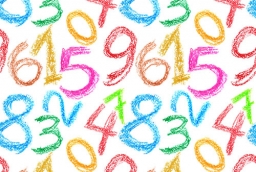GP - first term
Find the 1st term of the GP: ___, -6, 18, -54.
Final Answer:

You need to know the following knowledge to solve this word math problem:
algebraGrade of the word problem
Related math problems and questions:
- GP - negative term
 The first term of a GP is -3 and the square of the second term is equal to its 4th term. Find the 7th term of the GP.
The first term of a GP is -3 and the square of the second term is equal to its 4th term. Find the 7th term of the GP. - Geometric progression
 If the 6th term of a GP is four and the 10th is 4/81, find common ratio r.
If the 6th term of a GP is four and the 10th is 4/81, find common ratio r. - The 8th
 The 8th term of GP is greater than the 5th term, and the 10th term is 10 times the 2nd term find: 1) the common ratio 2) 20th term
The 8th term of GP is greater than the 5th term, and the 10th term is 10 times the 2nd term find: 1) the common ratio 2) 20th term - Determine 3914
 Find the quotient and the sixth term of GP if a1 = 420, a1 + a2 = 630.
Find the quotient and the sixth term of GP if a1 = 420, a1 + a2 = 630. - In a GP 72+144
 In a GP, the sum of the 2nd and fifth terms is 72, and the sum of the 3rd and 6th terms is 144. Find the common ratio, find the first term, and find the sum of the first six terms
In a GP, the sum of the 2nd and fifth terms is 72, and the sum of the 3rd and 6th terms is 144. Find the common ratio, find the first term, and find the sum of the first six terms - Determine 3755
 Find the third term and the quotient GP if a2 = -3, a1 + a2 = -2.5
Find the third term and the quotient GP if a2 = -3, a1 + a2 = -2.5 - Missing term 2
 What is the missing term for the Geometric Progression (GP) 3, 15, 75,__, 1875?
What is the missing term for the Geometric Progression (GP) 3, 15, 75,__, 1875?
